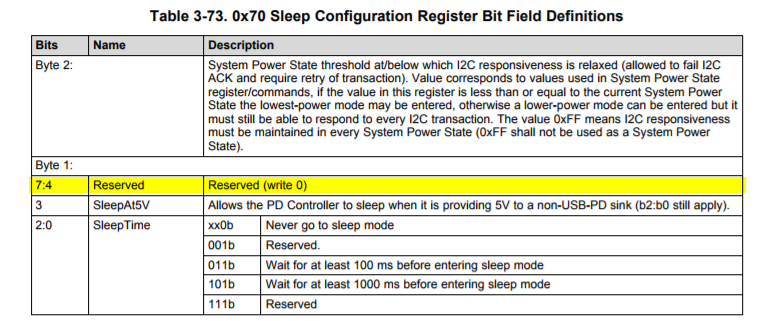Hi,
Can we combine the values of the sleep time register? I notice they are check boxes vs a drop down menu.
I also see an option for 30s delay, but that is not on the TRM. Is it safe to assume that 30 second delay is the 111b (reserved)?
If we dont check any of the boxes, I assume it will default to 001b. What does this translate to in terms of delay seconds?
Also, is the "System Power State" (0x20) register just a user-chosen value? Say, we wanted to have IDLE mode with I2C active. Could we just set the System power state to a higher state than the Sleep Configuration register?
Thanks,
Josh



